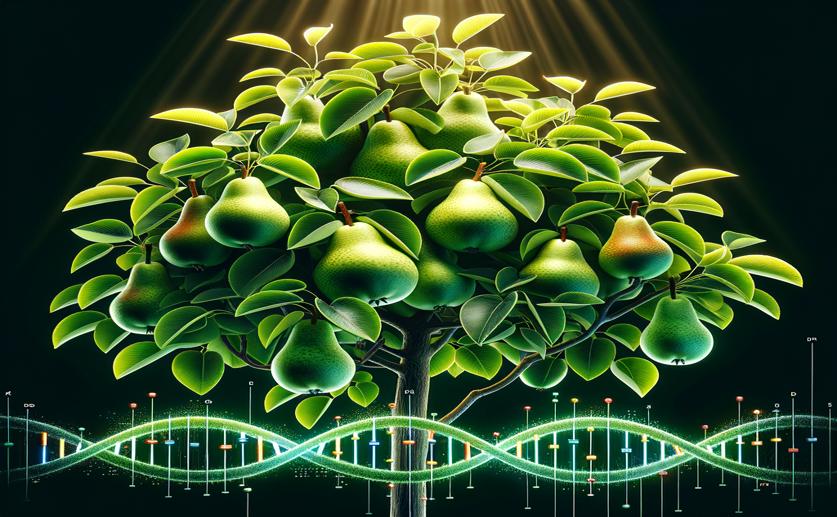
Mapping Pear Growth Genes and Boosting Greenness Through Chloroplast Growth
Jenn Hoskins
5th March, 2024

Image Source: Natural Science News, 2024
Key Findings
- In a study at Anhui Agricultural University, the gene PbrGA2ox1 was linked to chlorophyll levels in pear plants
- Overexpressing PbrGA2ox1 in plants increased chlorophyll by boosting chloroplast development, not by making more chlorophyll
- The gene also altered plant hormone and sugar levels, potentially affecting plant health and stress responses
References
Main Study
1) Genome-wide identification of GA2ox genes family and analysis of PbrGA2ox1-mediated enhanced chlorophyll accumulation by promoting chloroplast development in pear.
Published 4th March, 2024
https://doi.org/10.1186/s12870-024-04842-x
Related Studies
2) Auxin inhibits chlorophyll accumulation through ARF7-IAA14-mediated repression of chlorophyll biosynthesis genes in Arabidopsis.
3) Different color regulation mechanism in willow barks determined using integrated metabolomics and transcriptomics analyses.
4) Enhancing the light reactions of photosynthesis: Strategies, controversies, and perspectives.
5) Variation of photosynthesis during plant evolution and domestication: implications for improving crop photosynthesis.



 24th January, 2024 | Jenn Hoskins
24th January, 2024 | Jenn Hoskins